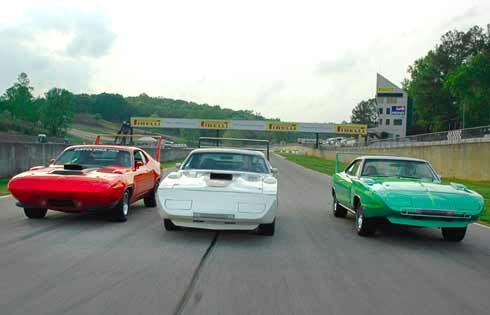This is the information I found recently:
While we were at the CEMA car show which was held at the Walter P. Chrysler Museum during the June Aero Warrior Reunion in Auburn Hills, MI, I met Roger Chapman and had a very interesting visit with him. In 1964, when Roger began working at Carron and Company (now known as Carron Industries) located in Inkster, MI, they were making the stainless steel exhaust systems for Chrysler's famous Turbine cars.
Although most of the time Carron employees made parts for Ford cars, another of the interesting parts they made for Chrysler were the nosecones for the 1969 Daytonas and 1970 SuperBirds! To begin the process, first Chrysler employees made a solid oak form of the Daytona and SuperBird nosecones exactly as they were in the correct dimensions and with all of the body lines, etc. When finished, this oak form was sent to a subcontractor, who then made a Kirksite mold from it.
Kirksite is a lead and alloy substance, soft enough to carve and form into a shape. The Kirksite mold was rented by Carron and Company, who then made the nosecones for Creative Industries. Roger said the Kirksite molds were only good to make a few nosecones and then the Carron employees would have to rebuild them by filling in the broken parts and re-shaping, which was easily done with the soft material. When the operation was going smoothly, Carron men turned out approximately 20 nosecones per day. There was not an assembly line at Carron and only a few employees got the honor of working on the nosecones. They were all built by hand.
The top piece of the nosecone was made on the Kirksite mold first, and then the two sides were formed. The flange on the top piece was fitted over the side panel and then was spot welded. Next, it was leaded-in and finished off. The bottom panel went on next, then the flanges in the headlight openings were made. When the nose shell was finished, it was covered with a preservation oil to keep it from rusting. While we were discussing the nosecone building procedure, we were looking at Rick Edward's original Limelight SuperBird and you could clearly see the flange seam on this Bird's nose.....someone at Carron never properly leaded it in and finished it off! Roger got a kick out of seeing the sloppy work done on Rick's nosecone.


















